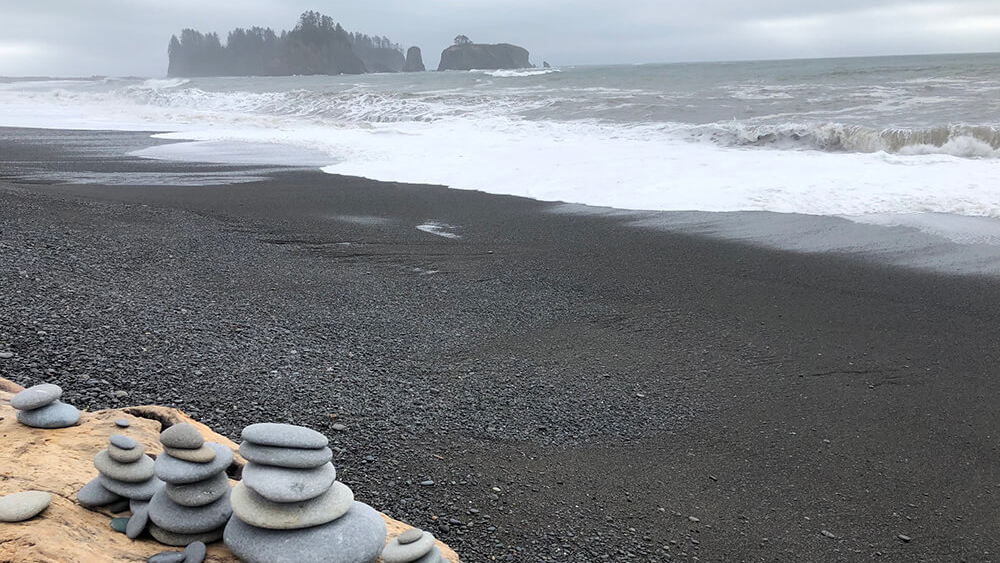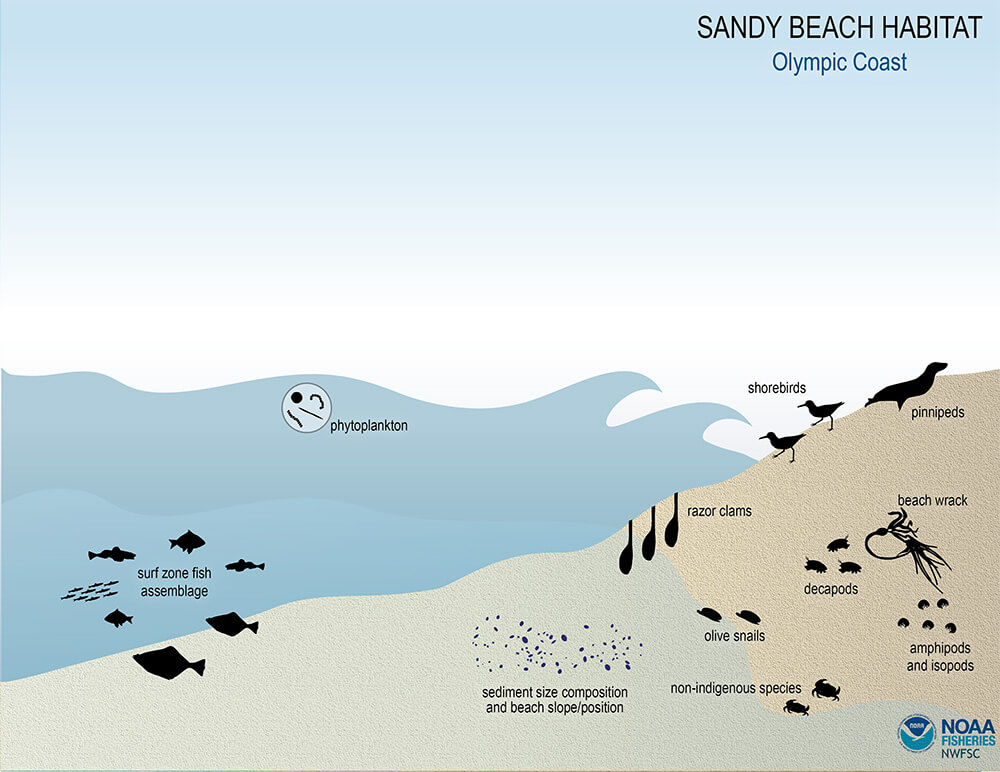Beaches

Beaches along the Olympic Coast exhibit a diversity of grain sizes ranging from fine sand to gravel and cobbles, often with large boulders and picturesque offshore rocks and islands scattered along the shoreline. Beach profiles change seasonally along this dynamic shoreline, showing marked differences in slope between summer and winter. Winter storms shape the coastline, prompting erosion and even landslides that may impact coastal habitats and species. In addition to providing habitat for marine species that may burrow in or scurry across the sediment, beaches provide important foraging areas for terrestrial species like black bears, river otters, and eagles.
Click on the illustration below to access user-friendly, online tools that allow resource managers, scientists, educators, students, and the public to explore, discover, and summarize ecosystem trends at the sanctuary.


